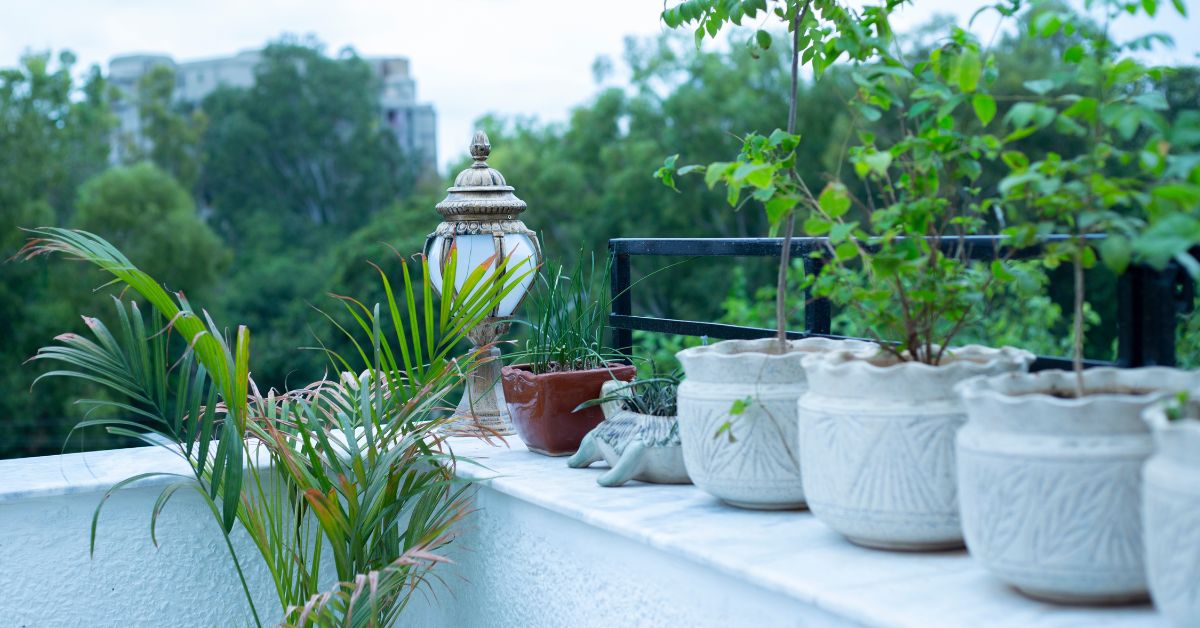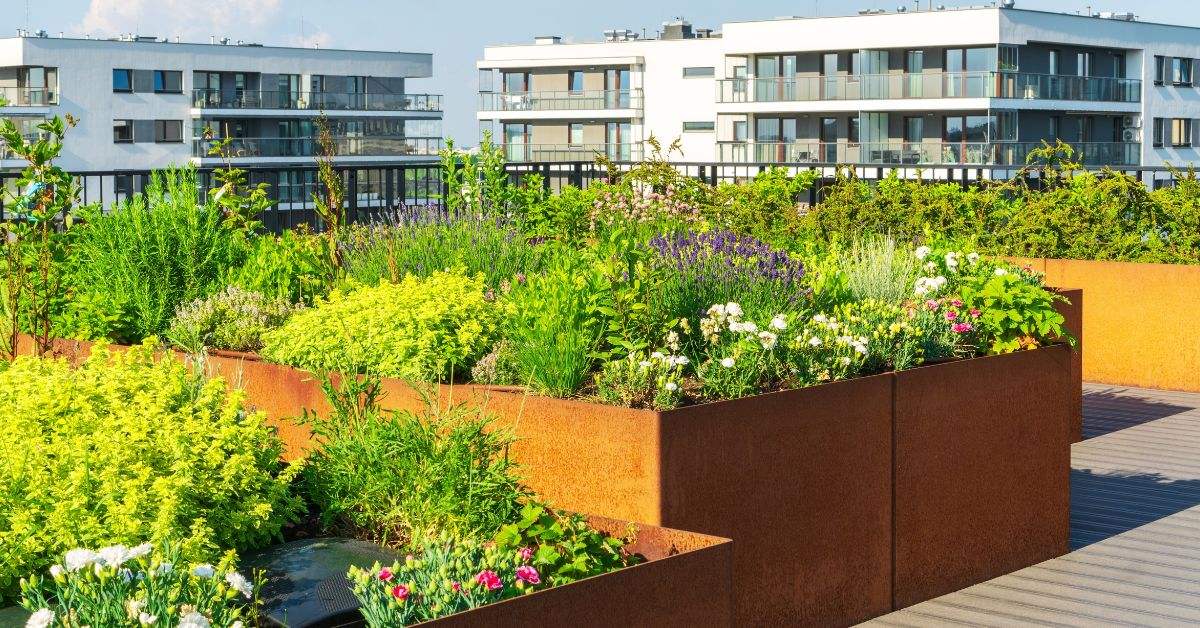10 Simple Steps To Build a Mini-Forest on Your Terrace (Even in a City!)
Feature image courtesy: Shutterstock
In the heart of Indian cities, where buildings grow faster than trees, the idea of a forest on your terrace might sound far-fetched.
But for many urban dwellers, this green rebellion is already taking root. What was once a space for water tanks and drying clothes has slowly transformed into a micro-ecosystem teeming with birds, butterflies, and the earthy scent of soil.
Starting your terrace forest doesn’t require acres of land, a large budget, or even a green thumb—just patience, the right knowledge, and a love for the wild.
Why terrace forests are more than just a trend
Terrace forests are not just a pretty patch of green for your Instagram feed. They offer multiple environmental, health, and lifestyle benefits, especially in densely populated Indian cities:
 With a bit of planning, your forest can double as an edible garden. Image courtesy: Shutterstock
With a bit of planning, your forest can double as an edible garden. Image courtesy: Shutterstock
- Urban cooling: Thick foliage on terraces helps reduce indoor temperatures, cutting down the need for artificial cooling.
- Cleaner air: Plants act as natural air purifiers, improving overall air quality.
- Mental well-being: Nurturing plants can be therapeutic and help counter the stress of urban life.
- Food security: With a bit of planning, your forest can double as an edible garden.
- Biodiversity pockets: Birds, bees, and butterflies often make these green spaces their home.
Here’s how to begin your forest journey
If you’re ready to bring the wilderness home, here are ten detailed steps to get started:
- Assess your terrace strength
Before lifting a single pot, consult a structural engineer to understand your roof’s weight-bearing capacity. Forests are heavier than gardens, especially when wet.
- Start small, dream big
Begin with a few native saplings and herbs. Observe how they grow and respond to sun, shade, and moisture. This trial phase helps you avoid costly mistakes later.
- Plan for drainage
Poor drainage is one of the biggest reasons terrace gardens fail. Install a proper sloping system and use lightweight grow bags or crates with holes to avoid waterlogging.
- Build healthy soil
Good soil is the backbone of any forest. Use a mix of compost, coco peat, red soil, and neem cake. You can also make your compost from kitchen waste.
- Choose native plants first
Start with species that are indigenous to your region—they adapt better, require less water, and invite local pollinators. For instance, neem, amla, curry leaf, hibiscus, or guava are hardy choices.
- Layer your planting
Mimic the natural forest structure with a canopy layer (trees), understory (shrubs), herbaceous plants (medicinal or culinary herbs), ground covers, and climbers. This vertical diversity supports better water retention and biodiversity.
- Harvest rainwater
Terrace forests need regular watering, especially in Indian summers. Install a rainwater harvesting system to collect and reuse water sustainably.
- Invite pollinators
Add flowering plants like marigolds, sunflowers, and basil to draw bees and butterflies. They’ll do half the work of pollination for you.
- Use organic practices
Skip chemical fertilisers and pesticides. Instead, use neem oil spray, compost tea, and other natural alternatives. Your forest should grow in harmony with nature, not against it.
- Be patient and consistent
Forests don’t sprout overnight. Some trees may take months to stabilise. Regular pruning, mulching, and observation are key to nurturing a thriving space.
 Urban terrace forests are slowly changing the way Indian cities breathe—both literally and metaphorically. Image courtesy: Shutterstock
Urban terrace forests are slowly changing the way Indian cities breathe—both literally and metaphorically. Image courtesy: Shutterstock
Tips to enhance your setup
- Keep heavier plants near beams or walls that can support more load.
- Create pathways using lightweight stepping stones or wooden pallets to avoid compacting soil.
- Install green nets or trellises if your terrace gets harsh sunlight.
- Consider wind direction and secure taller plants properly to prevent them from toppling.
From hobby to habit: The ripple effect of greening
Urban terrace forests are slowly changing the way Indian cities breathe—both literally and metaphorically.
In cities like Bengaluru, Mumbai, and Delhi, individuals and housing societies are embracing this shift not just for aesthetic pleasure but as a response to rising pollution, erratic weather, and disconnection from nature.
Starting your forest isn’t about perfection. It’s about progress. Even a few thriving native plants can attract wildlife, cool your home, and bring back the rhythm of nature in an otherwise mechanical city life.
And who knows, maybe your terrace will inspire a neighbour’s—and theirs another’s.
News